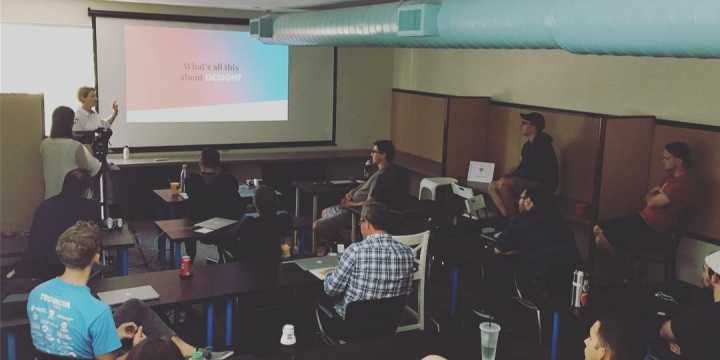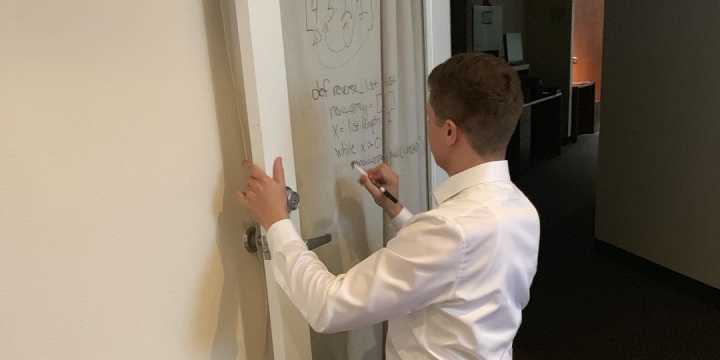The youth of today are our potential future developers. It may seem crazy to have such a young mind learning something seemingly as complex as developing a web page or app. However, it isn’t a convoluted science, and it definitely is not magic. Writing code is how we are able to communicate with computers to be able to do things such as run apps, websites, and play video games. Even children who are too young to read and write are still able to learn how to program due to the use of symbols. Teaching coding skills at an early age is not only about giving children an opportunity to learn about technology, mathematics, and writing, but it also supplies them with invaluable expertise in life and, eventually, the workplace.
Here are 5 reasons why your child should learn how to code:
1. Helps the child develop a “growth mindset”
The “growth mindset” is what makes the difference between someone giving up or pushing through the challenge. If your child develops a growth mindset, that means he/she believes that they can get smarter and that more effort will make them stronger. This sounds simple, but there are many people (yes, even adults) who have a “fixed mindset” which means that they believe that their intelligence is fixed.
2. Today, it is basic literacy
Kids these days are growing up in a very different age - the digital age to be more specific. Think about how many children who aren’t even out of diapers yet who are able to work an iPhone better than their parents. So many kids have their hands and eyes glued to a phone or tablet. Technology is embedded into the lives of children, and it’s one thing to know how to use these technologies, but it is a whole other story if they understand how they work and the logic behind them. New programs are coming out continuously that help young children learn to code by turning them into games. When parents become involved, children as young as five years have been able to play on iPad apps such as ScratchJr. The magic and power of web programming is truly unveiled when our youth doesn’t just passively consume technology, but is able to understand, control, and be a part of dictating the direction that it is heading.
3. Teaches organization and logic
Children that are taught how to code are provided additional skills such as organizing and analyzing data while applying logic to creating something that they enjoy - thus taking the effort out of learning something that might sound daunting or scary. To logically code, a child must be able to organize it in a way that makes sense. The more complicated the code is, the more the developer has to organize and may even implement other processes to streamline the process. It’s important to remember that the entire nature of coding is based on logic: first, identify a problem, think through the steps to fix it, and then implement a solution.
4. Programming is the future
Technology is in everything we do. Programmers and developers are in very high demand. The job outlook for developers is increasing at 24% which is much faster than average. Learning to code will give your child skills that they won’t learn in traditional schooling as well as give them an advantage in the future when they enter the workforce. Whether he/she wants to go into retail, finance, technology, or any other industry, a child who learned to code will have a heavy advantage and a wide variety of employment opportunities.
5. It’s fun and satisfying!
Suncoast Developers Guild (SDG) hosts a free program run by volunteers that are excited about introducing development to the next generation in a fun and educational way called SDG Jr. Our volunteers take a topic that they are passionate about and turn what some might find daunting and too complicated and make it fun and creative. The kids are taught using everything from drag and drop applications like Scratch to evolving into building their own webpage using HTML and CSS. If you think that is amazing, wait until you see 8 to 12 year-olds writing and changing logic using JavaScript, something many adults struggle with, and they find it fun. That doesn’t even include our 13 through 17-year-olds who learn the same skills and then have an opportunity to move on to Intermediate JavaScript courses along with a chance to be opened up to new languages beyond that.
So what is next for SDG Jr? We would love to help implement outreach programs throughout the Tampa Bay area. Our volunteers have started something incredible that can benefit so many other kids but our space is limited, and right now students have to bring their own laptops. We would love to work with local libraries, churches, and companies that could help us reach out to areas outside of downtown St. Pete. In addition to spaces to hold our events as a 501c3, we can accept donations of funds towards loaner laptops for kids that do not have a computer. We know that not everyone can donate money, we are happy to accept older laptops that are in working condition. Help us continue to inspire tomorrow’s developers.
Ready to get your child started with SDG Jr? Check out our website.



